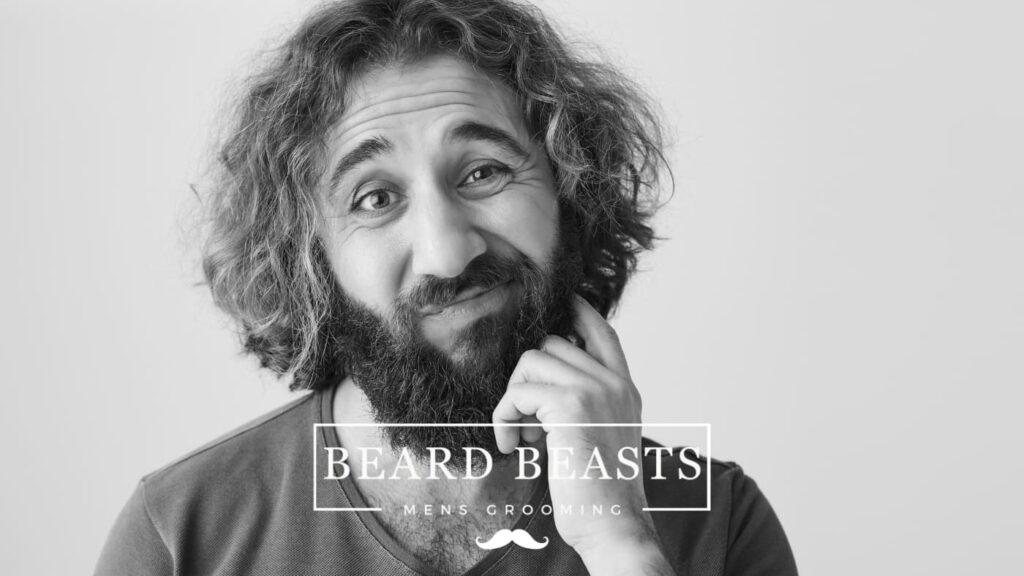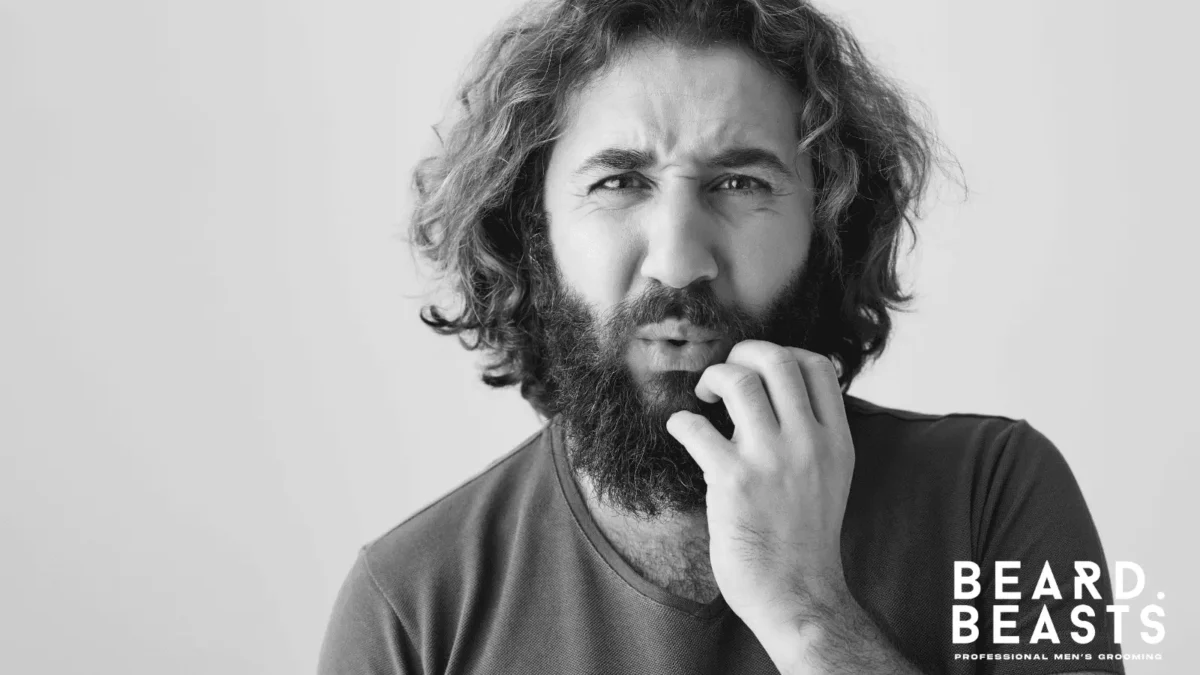Dealing with beard bumps can be a frustrating part of grooming for many men. These annoying and often painful pests, also known as beard hair bumps, arise from ingrown hairs that curl back into the skin, leading to inflammation. Fortunately, with the right knowledge and tools, managing and preventing these bumps can be straightforward.
In this article, we’ll explore effective home remedies, over-the-counter treatments, and when it’s time to seek professional advice from a dermatologist. Whether you’re a seasoned beard enthusiast or new to facial hair care, our guide will provide you with practical tips to achieve a smooth, bump-free beard.
Let’s dive into understanding beard bumps and navigate through the best practices for treating and preventing them.
What Are Beard Bumps?

Beard bumps, also known as pseudofolliculitis barbae in medical terms, are small, irritating bumps that appear on the skin after shaving. These bumps form when facial hair either grows back into the skin or does not break through the skin surface properly, leading to inflammation and sometimes infection. Not only can they cause discomfort, but they can also affect your skin’s appearance, making it crucial to address them properly.
Causes of Beard Bumps
The main culprit behind beard bumps is often the process of shaving itself. When facial hair is cut, the tip becomes sharp and can easily curl back into the skin as it grows, leading to those pesky bumps. Your hair texture plays a significant role too; curly or coarse facial hair is more likely to result in beard bumps because it tends to grow back into the skin more easily than straight hair.
Several other factors can contribute. Poor shaving techniques, such as shaving too closely, pulling the skin taut while shaving, or using dull blades, can aggravate the skin and increase the risk of ingrown beard hairs. Similarly, using unclean razors can introduce bacteria to the skin, leading to infection and exacerbating the problem of beard bumps.
Understanding what causes bumps and how they develop is the first step in preventing and treating them. Remember, the key to a bump-free beard lies in adopting the right shaving practices and maintaining good hygiene. By keeping your skin clean, using sharp razors, and following gentle shaving techniques, you can significantly reduce the occurrence of those annoying bumps and maintain healthy, smooth facial skin.
Identifying Beard Bumps
Beard bumps are not just any ordinary skin irritation. They have distinct visual characteristics that set them apart. Typically, these bumps are small, red, or inflamed spots that can sometimes fill with pus, resembling tiny pimples. They’re particularly noticeable after you’ve shaved, as the hair begins to regrow. The discomfort can range from a mild itchiness to a painful sensation, especially when touched or when the area is shaved over again.
How to Distinguish Beard Bumps from Other Skin Conditions
It’s important to differentiate beard bumps from other facial skin issues, such as acne or folliculitis. Unlike acne, beard bumps are directly related to hair regrowth and shaving practices. They are primarily found in areas where the hair has been cut or removed and is trying to grow back. On the other hand, acne can occur anywhere on the face and isn’t necessarily linked to hair growth. Folliculitis, while similar, is an infection of the hair follicles that can appear even in areas not shaved, though its appearance can be quite similar to that of beard bumps.
Common Areas for Beard Bumps
Beard bumps typically show up where the beard hair grows, with the jawline and neck being the most common spots. These areas are particularly prone to irritation from shaving, partly due to the angle at which the hair grows and the skin’s sensitivity. The curvature of the neck and the direction of hair growth can make these areas more susceptible to ingrown hairs, leading to those bothersome bumps.
Recognizing these bumps and understanding their common locations can help you take targeted action to prevent and treat them. By staying informed about the symptoms and appearance of beard bumps, you can better distinguish them from other skin conditions and take appropriate care of your skin.
Treatment Options for Beard Bumps
Navigating the treatment options for beard bumps involves a holistic approach that combines diligent skincare, proper grooming techniques, and, when necessary, professional intervention.
Here’s how you can manage and alleviate beard bumps with a focus on home remedies, over-the-counter treatments, and understanding when to consult a dermatologist.
Home Remedies: A Natural Approach
Home remedies offer a gentle yet effective means to soothe and treat beard bumps. Incorporating these into your daily routine can significantly reduce irritation and promote healthier skin:
- Warm Compresses: Applying a warm compress to the affected area can soften the skin, allowing trapped hairs to emerge from beneath the skin’s surface. This simple method can be particularly soothing and reduce the discomfort associated with beard bumps.
- Aloe Vera Gel: Known for its healing properties, aloe vera gel can calm inflamed skin and provide a cooling effect. Its anti-inflammatory qualities are excellent for reducing the redness and swelling of beard bumps.
- Gentle Exfoliation: Regularly exfoliating with a mild scrub or using our Bamboo Beard Boar Brush can help to slough away dead skin cells, preventing them from clogging hair follicles. This practice also aids in releasing ingrown hairs, thereby minimizing the chance of developing new bumps.
Over-the-Counter Treatments: Specialized Care
For those seeking more targeted solutions, several over-the-counter (OTC) products are formulated to combat beard bumps:
- Salicylic and Glycolic Acid Products: These ingredients are key for exfoliating the skin and clearing blocked follicles, making them effective in treating and preventing beard bumps. Look for cleansers, lotions, or toners that contain these acids.
- Moisturizing After-Shave Products: Lotions and creams designed for sensitive skin can hydrate and soothe the skin post-shave, reducing irritation and the likelihood of developing beard bumps.
- Hair Growth Inhibitor Creams: If you’re battling frequent beard bumps, a hair growth inhibitor cream might be a worthwhile investment. By slowing down the rate of hair growth, these creams can lessen the risk of hairs becoming ingrown.
Professional Help: When to See a Dermatologist
Sometimes, despite your best efforts, beard bumps persist or worsen, signaling the need for professional guidance:
- Persistent Pain or Inflammation: If your beard bumps are consistently painful or show signs of severe inflammation, professional medical advice is recommended.
- Signs of Infection or Scarring: Indicators such as pus, significant redness, or the development of scars are clear signs that it’s time to consult a dermatologist.
- Specialized Treatments: For stubborn or severe cases, a dermatologist can offer treatments like prescription creams, laser hair removal, or other procedures tailored to your specific needs.
Effectively managing these bumps requires a blend of preventive measures, home treatments, and specialized care. By understanding the causes and implementing the appropriate remedies, you can maintain smooth, irritation-free skin. However, recognizing when to seek professional help is key to addressing more serious cases and ensuring your skin remains healthy and clear. With patience and the right approach, you can achieve a comfortable and bump-free beard.
Preventing Beard Bumps
Preventing beard bumps is key to maintaining smooth, irritation-free skin. With the right shaving techniques and proper care, you can significantly reduce the occurrence of these pesky bumps.
Effective Shaving Techniques
- Shave with the Grain: Always shave in the direction of hair growth to minimize irritation and the risk of ingrown hairs.
- Use a Sharp Razor: A dull blade can tug at the hair instead of cutting it cleanly, which contributes to the risk of beard bumps. Replace your razor blades regularly.
- Do Not Stretch the Skin: While it might seem like a tight surface makes for an easier shave, it actually increases the likelihood of hair curling back into the skin.
Recommended Shaving Products
- Non-comedogenic Shaving Creams: Choose shaving creams or gels designed to prevent clogged pores and that are suitable for sensitive skin to reduce irritation.
- Quality Razors: Invest in a high-quality razor with multiple blades designed to give a close, smooth shave without over-exfoliating the skin.
Pre-Shave and Post-Shave Care
- Skin Preparation: Before shaving, wash your face with warm water and a gentle cleanser to remove dirt and oils. This also softens the beard hair, making it easier to cut.
- Hydrate and Protect: Apply a hydrating pre-shave oil or make your own diy shaving oil to protect the skin and enhance the glide of the razor, reducing friction and irritation.
- Aftercare: Immediately after shaving, rinse your skin with cool water to close the pores. Apply an alcohol-free aftershave balm or lotion to soothe and moisturize the skin, helping to prevent beard bumps.
- Exfoliate Regularly: Gently exfoliate your skin a few times a week to remove dead skin cells and prevent ingrown hairs. However, avoid over-exfoliating, especially immediately after shaving, to reduce skin irritation.
Implementing these preventive measures can greatly diminish the occurrence of beard bumps. Remember, the key to avoiding bumps lies in gentle, proper shaving techniques and thorough pre and post-shave care. By taking these steps, you can enjoy a smoother shave and healthier-looking skin, free from the discomfort of facial hair bumps.
Grooming Tips to Manage Beard Bumps
Maintaining a healthy beard and underlying skin is crucial for preventing and managing beard bumps. Here are some essential grooming tips to keep your beard looking its best while minimizing irritation.
Routine Beard Care
- Keep It Clean: Wash your beard regularly with a gentle, hydrating beard wash like our Ultra Soft Beard Wash to remove dirt, oil, and dead skin cells that can clog pores and lead to bumps.
- Moisturize: After washing, apply a quality beard oil to keep both your skin and beard hair soft. This helps prevent the hair from becoming brittle and ingrown.
- Dry Properly: Pat your beard dry with a soft towel instead of rubbing it. Rubbing can cause irritation and exacerbate these bumps.
Tools and Products for Beard Maintenance
- Trimmers and Scissors: For those who prefer a shorter beard, a good quality trimmer like the Philips Norelco Series 9000 can help maintain your desired length without the need for frequent shaving, which can irritate the skin. Scissors are great for snipping away stray hairs without affecting the skin.
- Beard Combs and Brushes: A Stainless Steel Beard Comb or a soft bristle brush can help detangle and style your beard while stimulating the skin underneath, promoting healthy hair growth and distribution of natural oils.
- Beard Oils and Balms: Select products that are formulated for sensitive skin if you’re prone to these bumps. Beard oils and balms can condition the beard, making the hair softer and less likely to cause ingrown hairs.
Incorporating these grooming practices into your daily routine can not only enhance the appearance of your beard but also support the health of the skin beneath it. By using the right tools and products, you can manage beard bumps effectively, ensuring your facial hair is both a comfortable and attractive feature.
Frequently Asked Questions
Here are the top questions and straightforward answers to help you manage and prevent those irritating beard hair bumps, ensuring your beard stays smooth and comfortable.
How do I get rid of hair bumps in my beard?
To get rid of hair bumps in your beard, start with gentle exfoliation to free any ingrown hairs. Use a sharp, clean razor if you need to shave, and consider applying a topical treatment like hydrocortisone cream or salicylic acid to reduce inflammation and promote healing. Regular washing and moisturizing will also prevent new bumps from forming.
How long does it take for beard bumps to go away?
The time it takes for these bumps to disappear can vary depending on the treatment method and your skin type. Generally, with proper care and treatment, you can expect to see improvement within a few days to a week. Consistent skin care and avoidance of further irritation are key to faster healing.
How do I get rid of beard bumps under my chin?
Beard bumps under the chin can be particularly stubborn due to the skin’s sensitivity in that area. Focus on softening the hair with a warm compress before shaving, and use a gentle shaving technique. After shaving, apply an aftershave balm or a soothing lotion to calm the skin. Avoid tight collars that can irritate the area.
Does Beard Oil cause bumps?
Beard oil itself does not cause bumps if it’s of high quality and suited to your skin type. In fact, the right beard oil can moisturize the skin and reduce the likelihood of ingrown hairs. However, if you’re allergic to any ingredients or the oil is comedogenic (pore-clogging), it could contribute to skin problems. Opt for non-comedogenic oils designed for sensitive skin.
What cream can you put on beard bumps?
For immediate relief, hydrocortisone cream can reduce inflammation and itching associated with these particular bumps. For longer-term treatment, creams containing salicylic acid or benzoyl peroxide can help by exfoliating the skin and clearing blocked follicles. Always patch test a new product to avoid adverse reactions.
What oil is best for beard bumps?
Oils rich in vitamin E, such as argan oil or jojoba oil, are excellent for beard bumps because they moisturize the skin without clogging pores. Tea tree oil, diluted with a carrier oil like coconut or almond oil, can also help thanks to its natural antiseptic properties. These oils can soothe irritated skin, reduce inflammation, and promote healing.
Dealing with this problem can be a challenge, but with the right approach, they can be effectively managed and prevented. Understanding the causes and treatments allows you to take proactive steps towards maintaining a healthy, bump-free beard. Remember, every skin type is different, so it may take some experimentation to find the best routine that works for you.
Conclusion
Beard bumps, those irritating little issues that can turn a good beard day bad, don’t have to be a constant struggle. The key to overcoming them lies in understanding their causes, identifying their symptoms, and applying the right treatments and preventive measures.
Remember, effective shaving techniques, proper skin care, and the right grooming tools and products are your best allies in maintaining a healthy, bump-free beard. From home remedies to professional advice, managing these bumps is about consistency and care. Whether it’s choosing the right oils to nourish your skin or learning the best shaving practices to minimize irritation, the path to a smoother beard is clear.
Keep these tips in mind, and you’ll be well on your way to enjoying the look and feel of your facial hair, without the discomfort of beard hair bumps.





